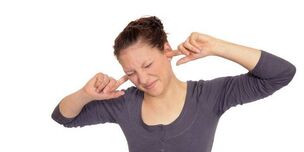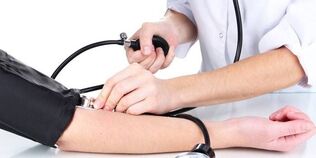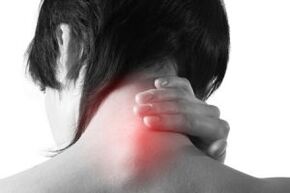The diagnosis of osteochondrosis, in my opinion, is not as sad as dyscirculatory encephalopathy and vegetative-vascular dystonia. Yes, by "osteochondrosis" we also mean completely different pathologies abroad. Abroad - these are serious bone lesions, mostly in children. With us, it is enough to complain of neck pain, do an X-ray or MRI (where degenerative changes will surely be found) - and here is the diagnosis of osteochondrosis.
The main causes of back pain
In most cases, the patient is diagnosed with osteochondrosis with back pain. But in fact, the reasons are different:
- Nonspecific back pain
Caused by muscles, ligaments, tendons. It does not require MRI. This is the most common cause of back pain and the most favorable option, because doctors usually prescribe quite appropriate therapy - nonsteroidal anti-inflammatory drugs, muscle relaxants, exercise. It should be noted that for chronic pain that lasts longer than 3 months, completely different medications are needed. - Quite a rare cause of back pain. Are you surprised? And if a hernia is found on magnetic resonance imaging and your back hurts, isn’t the hernia the cause of the pain? In most cases, no. In addition to hernia, in addition to pain, there should be other symptoms: weakness of certain muscles, decreased tendon reflexes, impaired sensitivity in the zone of root innervation. There are no such symptoms - you can forget about the hernia as the cause of the pain.
MRI excludes serious causes other than pain and other symptoms.
It is much worse when the diagnosis of osteochondrosis is made with completely different complaints: increased pressure, dizziness, weakness, anxiety, headache. What should we exclude in this case?
- Tension headache and migraine.
Not tied to your neck. Healing your neck means following the wrong path, approaching the chronicity of your pain. Tension headaches can be accompanied by muscle tension, but it is still a tension headache, not osteochondrosis. - Dizziness
Not due to acute blues. The real causes of dizziness: benign paroxysmal positional vertigo, vestibular data injuries, vestibular migraine, Meniere's disease, vestibular paroxysm, pathology of the cerebellum and trunk, psychogenic dizziness, iron and vitamin B 12 deficiency, heart disease and many more, lung disease. - Arterial hypertension.
Sometimes I come across the opinion that if a patient's blood pressure rises, his neck and, of course, the veins in his neck should be checked. Did you find arterial hypoplasia, curvature, degenerative changes in the cervical spine? We blame them for the increase in pressure. That is absurd. In reality, there is no connection between increased pressure and the neck. - Anxiety Depressive Disorders.
Do you have anxiety, dizziness, weakness and fatigue, sleep disturbance? Let's get Benim back. And the poor patient, instead of consulting a psychiatrist with antidepressants and tranquilizers, receives physiotherapy, massage and some kind of homeopathy. - Iron deficiency, thyroid dysfunction.
Always keep in mind when you complain of fatigue, weakness, decreased concentration, dizziness, headache.
Over time, changes occur in our body. The baby's skin is soft and supple. At 30, no matter how we resort to cosmetic procedures, she is no longer like that. Imagine a sailor who has spent his whole life sailing: his skin is rough and wrinkled. The same thing happens with our spine. In most cases, bumps and hernias are natural changes associated with age. If there are many provoking factors in your life, such as carrying heavy loads, then the likelihood of a large hernia increases.
Numerous studies have found that disc protrusions occur in healthy people: at the age of 20 - up to 40% of respondents (remember, these are patients without back pain), at the age of 70 - up to 90%. In addition, the severity of the MRI changes is not related to the degree of pain syndrome: with a large hernia there may be no pain at all, and with small bumps the patient may have severe pain (because the reason is not in the bumps but in something else).
Does a hernia never hurt?
Of course there is! In about 1-4% of all cases of back pain. How do you recognize that? Hernia not only leads to pain, but also to other disorders: impaired sensitivity, changes in reflexes and sometimes a decrease in muscle strength. All this is determined by the competent doctor during the neurological examination.
If the muscle strength is sufficient, the hammer reflexes are symmetrical, not weakened, there are no sensory disturbances, then it is extremely unlikely that the back pain is caused by a hernia.
In addition, by squeezing the spinal root at a certain level (if you read the MRI results, you will see that the protrusions and hernias are described at a level, for example, C3-C5 or L5-S1), the hernia does not only cause a decrease in sensitivity anywhere, already defined segments and strictly defined changes in reflexes. The neurologist correlates the level of the lesion with MRI data.
Classification of symptoms in cervical osteochondrosis
The development of this disease sometimes occurs 30-35 years ago, so the signs of the disease can occur even in adolescence. The signs of cervical osteochondrosis are discussed in detail below, the disease has become a real problem in the modern world. Inactive work, prolonged stay in front of the computer negatively affect the health and well-being of the person. All symptoms of cervical osteochondrosis are associated with malfunctions of several systems:
- In advanced cases there are signs of compression, the integrity of the spinal cord located in the spinal canal is compromised.
- A pathological nervous process can affect the peripheral system. The roots of the spinal cord, located near the foci of deformation of bone and cartilage tissue, are negatively affected.
- In some cases, the vertebral arteries are constricted. These blood vessels deliver nutrients, oxygen, to brain cells. Violation of these processes leads to a sharp deterioration in human well-being.

It is known that one of the first signs of the development of the disease is pain in the cervical spine. In the beginning, it passes quickly, it is periodic, and then it becomes chronic. The main places of pain localization are:
- occipital muscles (enhanced by turning the neck, tilting the head);
- shoulder area;
- neck.
It can hurt in different ways, depending on the location of the lesion, the discomfort can be sharp, shooting, occasionally calming down, it can be painful and constant. Over time, head movements become more difficult due to tension in the neck muscles. If the artery constricts, cervical migraine is sometimes noticed (with a weakening of the blood supply, lack of oxygen, headache).
Nausea
In some cases, the blood vessels are constricted, which ensures the supply of oxygen and nutrients to the human brain and inner ear. Therefore, nausea occurs in osteochondrosis. This symptomatology is accompanied, as a rule, by loss of appetite, which causes weight loss, lack of necessary nutrients. In the advanced stages, the disease can cause vomiting by turning the head, walking or bending. This is due to the lack of blood supply to the middle ear, where the center of balance is located.
Neurological symptoms of cervical osteochondrosis
Some manifestations of the disease cannot be immediately attributed to characteristic signs. You should know which symptoms of cervical osteochondrosis cannot be ignored, for example, shortness of breath. If this section is damaged, phrenic nerve irritation syndrome may develop. The patient has difficulty breathing, lack of oxygen, which causes difficulty breathing and even severe suffocation.
This manifestation of pathology is often accompanied by snoring, intensified if you take an uncomfortable position during sleep. This leads to the fact that the person does not rest at night, wakes up with a feeling of general weakness, weakness, feels tired and overwhelmed. If left untreated, this condition can lead to memory impairment, decreased concentration and irreversible changes in brain tissue.
Vestibular signs
Another direction, how osteochondrosis of the cervical spine manifests itself - vestibular signs. The supply of the brain with all the necessary nutrients takes place through the spinal arteries. If cervical chondrosis develops, in which the inner ear is disturbed, the patient feels tinnitus and tinnitus. In some cases, these symptoms are accompanied by damage or hearing loss.

Dumplings in the throat
In some cases, the disease manifests itself in only one symptom - the throat. There is a feeling that a lump has formed in the throat with osteochondrosis of the cervical spine, there is sweating, itching, dryness, difficulty swallowing. These manifestations are associated with impaired conduction of neurovascular lobes arising from the spinal cord. A lump in the throat is not a specific symptom of chondrosis; may indicate a tumor or inflammatory process. When this symptom occurs, be sure to consult a doctor.
Visual signs of cervical osteochondrosis
The symptoms of chondrosis of the cervical spine can vary, but the most common are visual acuity disorders. The supply of visual analyzers takes place through the carotid and spinal arteries. If, due to the squeezing of the latter, there is a decrease in blood circulation, a decrease in vision begins, which is not improved by wearing glasses. Cervical osteochondrosis - symptoms:
- low blood pressure;
- floating, flickering dots;
- atherosclerosis of arteries in the brain;
- violation of focusing on the subject;
- cover, fog before eyes.
A characteristic sign that there is a decrease in vision due to constriction of the blood vessel by the spine, damage to blood circulation, will be the lack of improvement when wearing glasses and performing special exercises. Only timely treatment of the underlying disease (before the onset of irreversible tissue damage) will help change the condition.
Arterial Signs

The spine plays an important role in the human body, so any disease affects many systems. There are certain arterial signs of cervical osteochondrosis that indicate this disease. These include sudden loss of consciousness. This is the most unpleasant, the most dangerous symptom inherent in this disease. This occurs due to impaired blood circulation, when blood temporarily stops flowing through the cerebral arteries.
Strong arterial spasm occurs due to the reaction of deformed bone processes to irritation of nerve endings. If your friend has osteochondrosis of the cervical spine and has lost consciousness, he must lay it down, raise his legs to a slight elevation to increase the outflow of blood from the limbs and increase the flow to the brain. After that, people tend to recover quickly.
Blood pressure instability is another symptom of this disease. Doctors can diagnose convulsive indicators if the blood supply is disrupted. This is not a specific symptom of chondrosis, but fits into the general picture of the disease. Blood pressure may drop or rise sharply. The person feels the deterioration of his condition, so he must ensure peace.
Dizziness
It has been previously described that loss of consciousness sometimes occurs with this disease. This applies to cases where blood flow to the brain was very difficult. More often patients feel dizzy due to cervical osteochondrosis. This is a common symptom that accompanies all patients with this disease. This phenomenon has a spontaneous manifestation. This condition is caused by a decrease in the amount of oxygen supplied to the inner ear. It is found in the human brain and is responsible for the sense of balance. Dizziness occurs when:
- turning head, neck;
- if you suddenly get out of bed.

Temperature in osteochondrosis
In some cases, pathological processes spread among the structures of the cervical segment of the spinal cord. This occurs with disc protrusion, canal stenosis. Fever in osteochondrosis is the body's response to these pathologies. The same reaction is possible with spinal artery syndrome. This is a common occurrence in osteochondrosis in the last stages of the disease. Therefore, fever refers to non-specific disease symptoms.
This symptom will not necessarily be present, body thermoregulation may be normal. If you feel constant pain in the back of your head, shoulders, neck, and when you turn or tilt your head, aggravation occurs, you should consult a specialist and undergo an examination. Lack of treatment will necessarily lead to the fact that the condition will worsen, the level of comfort of life will decrease.
Learn more about what to do when cervical osteochondrosis is diagnosed.
Symptoms of cervical osteochondrosis
Cervical osteochondrosis is a lesion of the spinal discs of the cervical spine, as a result of which they undergo degenerative-dystrophic changes. The main reason for its development is a violation of the normal course of metabolic processes, which leads to distortion of the body structure of the vertebrae and cartilaginous discs. In the case of localization on the neck, the symptoms of the pathology are mainly determined by the compression of the large vessels. Treatment methods are selected depending on the stage, specificity of the course, severity and main symptoms.
Characteristics of the disease
The cervical form is the most dangerous type of osteochondrosis: it leads to worsening of cerebral circulation, because the spinal artery passes through this area - one of the largest blood vessels that supply the brain with necessary substances and oxygen.
Vertebral displacement, abnormal changes, and excessive growth of bone and fibrous tissue disrupt the normal functioning of the vessel.
The specificity of the symptoms of osteochondrosis in this part is determined, among other things, by one of the structural characteristics of the cervical vertebrae, which consists in their closer adherence. As a result, any change in one segment causes the failure of the entire department.
Stage-dependent clinic
In the process of its development, cervical osteochondrosis goes through four stages. How does this manifest on each of them?
- Phase 1. It is characterized by the appearance of initial disturbances in the stability of the intervertebral discs. Symptoms are mild or absent. Not very pronounced feelings of pain and local muscle tension are possible.
- Phase 2. The disc protrudes, the gaps between the vertebrae decrease, the annular fibrosus collapses. In many cases, as a result of compression of the nerve endings, pain appears, mostly of a punctate nature. They intensify when turning, tilting the door. Decreases tone, weakness often occurs.
- Stage 3. The process of final destruction of the fibrous ring leads to the formation of a hernia. This phase is characterized by significant spinal deformity. Increased pain and fatigue occur in the background of sensory disturbances and limited mobility in the affected area.
- Phase 4 is the hardest. Intense pain syndrome is manifested by any attempt to move, which entails a significant limitation of mobility of this department. Sometimes the pain subsides, but this does not show an improvement in the condition, but only indicates an increase in the size of the bone growths, significantly restricting movement. They often lead to the patient's disability.
Symptoms of cervical osteochondrosis
When located in the cervical spine, the predominant symptoms of osteochondrosis are:
Pain is the main symptom
- pain in the neck, occiput, shoulder, arms;
- movement restriction, crunch at various turns, neck tilt;
- weakness in hands;
- withdrawal pain in the left side of the chest, radiating to the appropriate arm;
- burns in the interscapular zone;
- recurrent headaches;
- weakness;
- dizziness (in severe cervical osteochondrosis, loss of consciousness may occur);
- is impaired coordination of movement, which is mainly reflected in gait;
- hearing impairment, tinnitus;
- reduced vision;
- sore throat;
- poor dental health;
- weakening or hoarseness of voice;
- snoring is due to tension in the neck muscles.
In the cervical type, the symptoms are almost similar to the symptoms of cervical osteochondrosis. It:
- asthenic syndrome;
- dizziness and headache;
- periodic pressure fluctuations;
- flashes of flies before the eyes;
- pain in the shoulder girdle and arms;
- muscle weakness;
- numbness, tingling, coldness of the fingers;
- chest pain, heart area;
- nausea;
- numbness of tongue, face;
- dental problems;
- feeling the current flowing along the arms when trying to bend the neck.
Syndromes
Symptoms of cervical osteochondrosis are not considered typical. Which of them is most pronounced depends largely on the specific goal. Many manifestations can be mistakenly associated with other pathological conditions. Therefore, there are often cases when the wrong treatment is prescribed. The symptom complex is divided into the following groups:
- radicular;
- spinal artery syndrome;
- irritative-reflex syndrome.
Radicular syndrome
His other name is cervical sciatica. The syndrome develops as a result of tightening of the nerve endings in the neck. The pain is transmitted from the neck, given to the shoulder blades, down the shoulder, along the outside of the forearm, to the fingers. In this case, the following often appear:
- creepy feeling;
- tingling in the hands, forearms, fingers;
- pasty.
Manifestations also vary depending on the area of the lesion. If the endings of the central nerve are affected, the pastiness extends to the thumb, middle, index finger. When the ends of the brachial nerve are completed, the small and the ring finger are affected.
Irritative-reflex syndrome
Burning acute pain in the cervico-occipital region, which occurs during movement after a static state: after sleeping, when sneezing, a sharp turn of the head becomes its sign. Often the pain radiates to the shoulder and chest.
Spinal artery syndrome
Symptoms of cervical osteochondrosis are:
- pulsating or burning headache (paroxysmal or persistent), extending to the temporal area, dark, occipital, superior arches;
- increased discomfort with certain movements or after a long time in an awkward position;
- general weakness;
- nausea;
- loss of consciousness;
- hearing problems;
- disorders of the vestibular apparatus;
- eye pain;
- blurred vision.
Heart Syndrome
When this complex of symptoms of osteochondrosis of the neck develops, an image almost similar to angina pectoris develops, which often leads to the wrong treatment. Muscle contractions and cramps in the heart area are most likely a reflex response to compression of nerve endings in the lower cervix. Cardiac syndrome is caused by irritation of the phrenic nerve (its fibers lead to the pericardium) or the large chest muscle:- pains appear suddenly, last a long time;
- aggravated by sharp neck movements, coughing, sneezing;
- tachycardia and extrasystole are possible;
- pain does not stop after taking coronary dilators;
- There are no signs of impaired circulation on the ECG.
Worsening of the disease
In the worsening phase, the symptoms of cervical osteochondrosis are:
- increased pain and its radiation to the shoulder blade, interscapular zone, arms, shoulders;
- Difficulty moving shoulders, torso, arms, and sometimes breathing (inhaling and exhaling);
- pain syndrome is often reminiscent of heart attack or intercostal neuralgia;
- when pain appears in the right hypochondrium or iliac, the clinic is similar to the manifestations of gastritis or cholecystitis;
- headaches are of a prolonged nature, imbalance, visual and auditory functions are disturbed;
- in the innervation zone, skin trophism is disturbed, tingling, numbness, dryness, pallor, burning, cold appear;
- neck muscle tone increases;
- weakness, lethargy, nervous tension, anxiety, emotional instability appear;
- possible sleep disorders, memory disorders and concentration problems.
How the disease is diagnosed
Leading methods for the diagnosis of cervical osteochondrosis are:
- radiography;
- magnetic resonance imaging;
- computed tomography;
- Doppler ultrasound;
- double-sided scanning.
The last two methods are used to check the condition of blood vessels.
Signs of cervical osteochondrosis
The cervical spine contains a huge number of blood vessels that supply the brain. Therefore, any neck problems, including cervical osteochondrosis, can lead to a deterioration in the brain’s blood supply. Therefore - and the most common signs of cervical osteochondrosis:
- regular headaches and dizziness,
- occasionally - sudden fainting,
- impaired coordination of movements, the appearance of "looseness" of gait,
- hearing loss, tinnitus,
- visual impairment,
- occurrence of dental diseases,
- appearance of hoarseness in the voice, change in the rhythm of the voice, its weakening,
- snoring,
- persistent sore throat.
Other symptoms of cervical osteochondrosis include a feeling of coldness in the fingers, numbness, weakness in the hands, neck and shoulder pain, often accompanied by dizziness and nausea.
How to treat this disease
Osteochondrosis of the cervical spine, symptoms and treatmentdepend on the patient's condition, severity of the disease, the nature of the lesion of the cervical spine.
- Hospitalization and medication may be required in the acute period.
Commonly used analgesics, novocaine muscle blockers, muscle relaxants, muscle cramps; chondroprotectors for cartilage nutrition; sedatives that calm the nervous system, B vitamins that improve neuromuscular conduction.
Treatment of osteochondrosis of the cervical spine is always long-term and should be comprehensive.
- In periods of remission, when there are no acute symptoms, physiotherapy methods (electrophoresis, ultrasound, etc. ) are widely used, physical therapy, massage, as well as non-traditional procedures, such as acupuncture, are necessarily prescribed.
There are many conservative ways to treat osteochondrosis that can stop the progression of the disease. However, each patient needs an individual course of treatment, taking into account the stage of the disease, the characteristics of the organism, sex and age.
The goal of treatment for cervical osteochondrosis is:

- Removal of pain and swelling at the site of inflammation.
- Relaxes tense neck muscles.
- Release of pinched nerve roots.
- Increased blood circulation.
- Activation of metabolism.
- Improving the nutrition of intervertebral discs.
Targeted comprehensive treatment can prevent bulges and intervertebral hernias.
In order not to startosteochondrosis of the cervical spine, symptoms and treatment, and to avoid serious complications of the disease, timely treatment should be started.






















